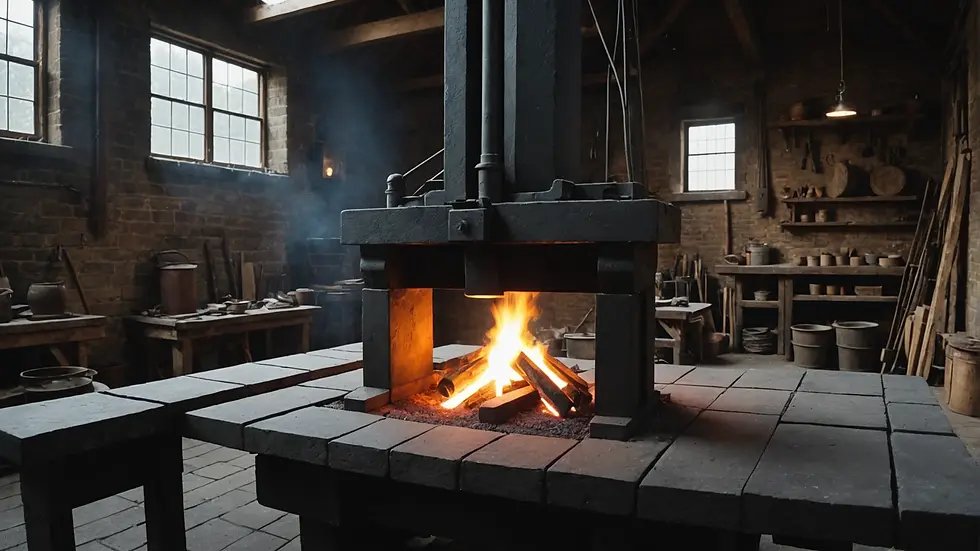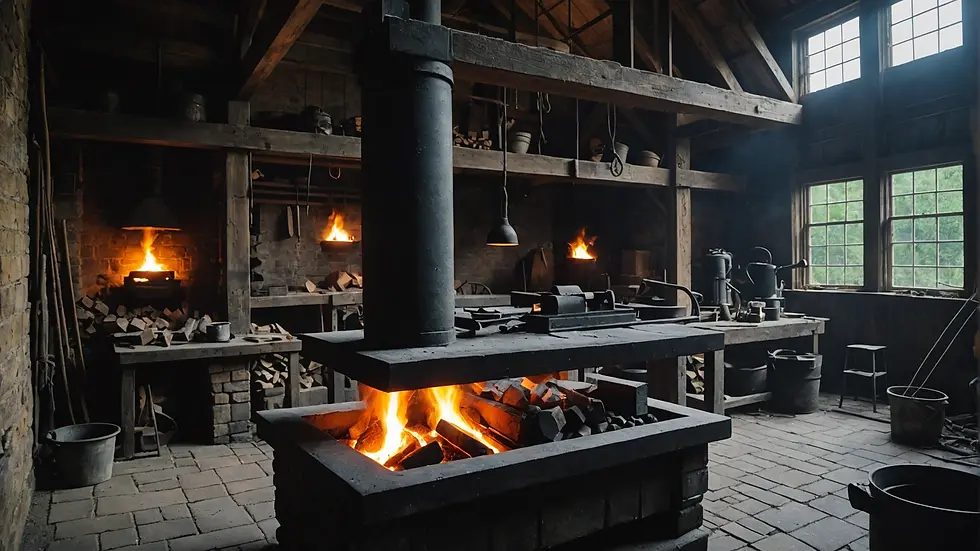Maximizing Efficiency and Heat Reflection in Your DIY Forge Build: Is Refractory Cement or Firebrick the Better Choice?
- Sep 24, 2024
- 2 min read
Are you on a mission to craft the perfect forge for your creative endeavors, only to be met with the challenge of sourcing the right materials? Fear not, fellow artisan, for this article will provide you with insightful guidance on constructing a forge that maximizes efficiency and heat reflection.
The Dilemma: Kaowool, Refractory Cement, or Firebrick?
In the realm of forge construction, the choice of materials can greatly impact the performance of your creation. The traditional approach of using kaowool with refractory cement is a popular method, but recent supply constraints have left many builders in a predicament. If you find yourself in a similar situation, opting for high alumina bubble refractory cement can be a viable alternative. This specialized cement, when applied at a thickness of around 1/4" (8mm), serves as an excellent hardface material. Remember, thicker isn't always better as it only adds unnecessary weight to your forge.
Building Your Forge: Tips and Tricks
To ensure a successful forge-building venture, meticulous planning and execution are key. When constructing the forge structure, consider building a form that allows for ease of removal post-construction. Additionally, incorporating holes and legs into your design requires foresight to prevent any assembly mishaps. For optimal heat reflection within the forge, adding plistex as an infrared reflector is highly recommended.
Insulation: The Heart of Heat Retention
The inside and outside layers of your forge play crucial roles in retaining heat and maximizing efficiency. While koawool or a similar insulator at approximately 1" (2.5cm) thickness serves as an excellent heat shield, exceeding 2" (5cm) may not yield significant benefits. To prevent the insulator from shifting during use, bonding the koawool together with a rigidizer is essential. Consider reinforcing the outer layer with foil to maintain the shape and integrity of the insulating material.
Refractory Cement vs. Firebrick: The Verdict
As you ponder between straight refractory cement and firebrick for your forge, consider the trade-offs between heat retention and insulation. Opting for refractory cement alone may result in significant heat loss radiating outside the forge, making it essential to ensure the surroundings are fireproof. In contrast, firebrick offers superior insulation properties, enhancing heat retention within the forge and promoting efficient heat distribution.
Enhancing Forge Performance with End Reflectors
To elevate the performance of your forge, integrating end reflectors is a strategic step. These reflectors should sufficiently cover the opening while maintaining a distance of approximately an inch from the ends. This configuration allows for optimal heat reflection within the chamber while facilitating proper air circulation for combustion efficiency. Minimizing flame wastage outside the forge ensures that every bit of heat energy is harnessed for your crafting endeavors.
In conclusion, when embarking on your forge-building journey, weigh your options between refractory cement and firebrick with careful consideration for heat retention, insulation, and efficiency. By implementing the tips and insights shared in this article, you are poised to construct a forge that not only meets but exceeds your expectations. Harness the power of heat reflection and efficiency as you embark on your DIY forge-building adventure!

Remember, the forge you create is a reflection of your craftsmanship and ingenuity. Choose your materials wisely, plan meticulously, and forge ahead with confidence in your ability to craft a superior DIY forge. Onward to a world of boundless creativity!



Comments